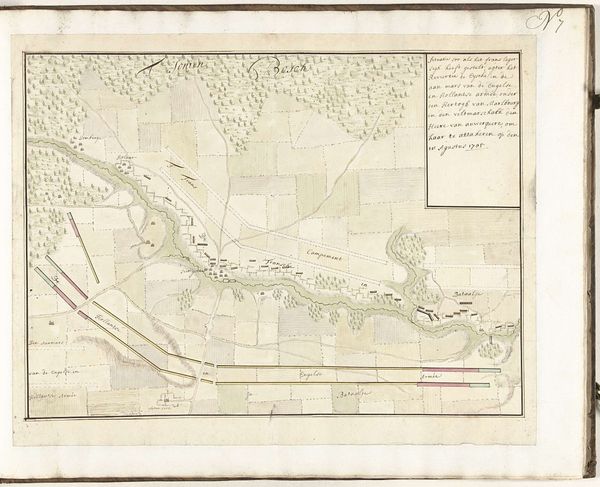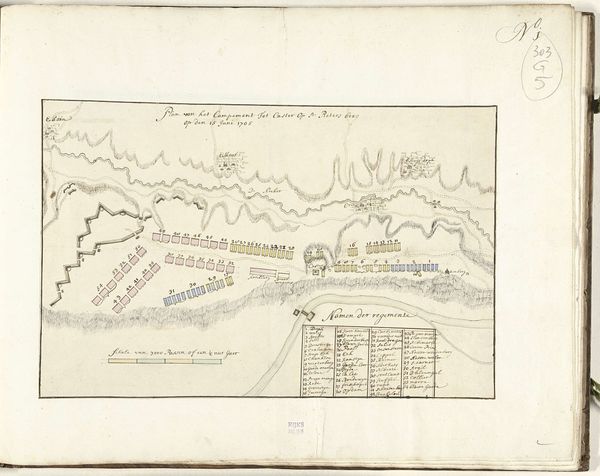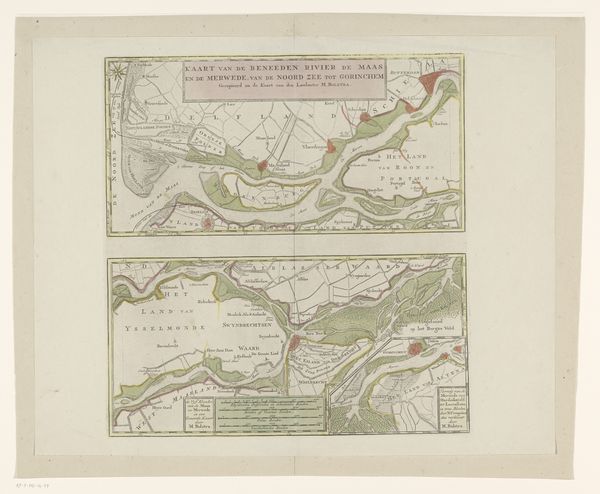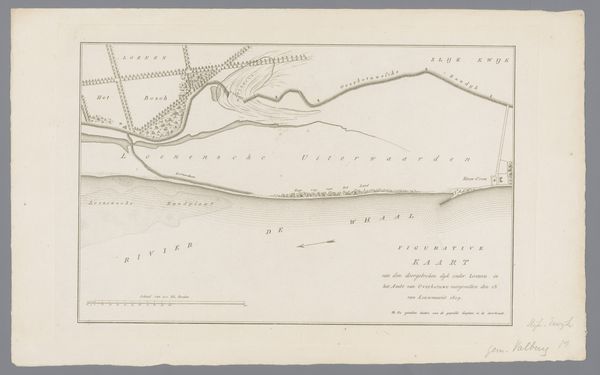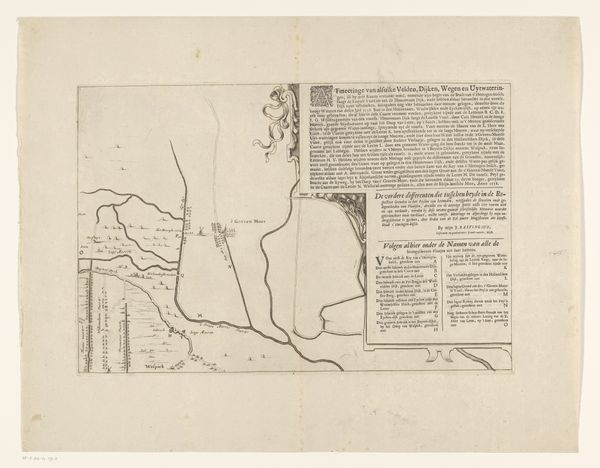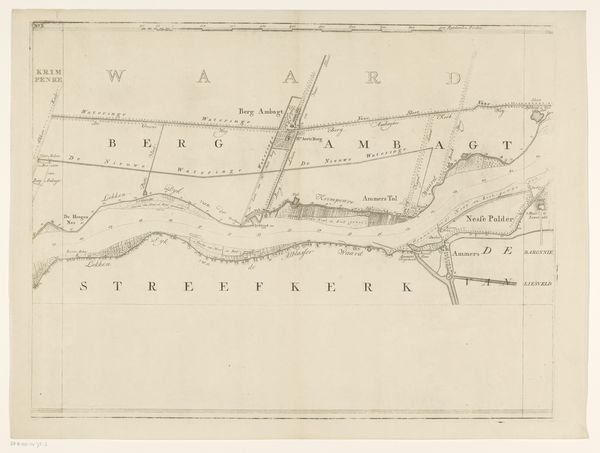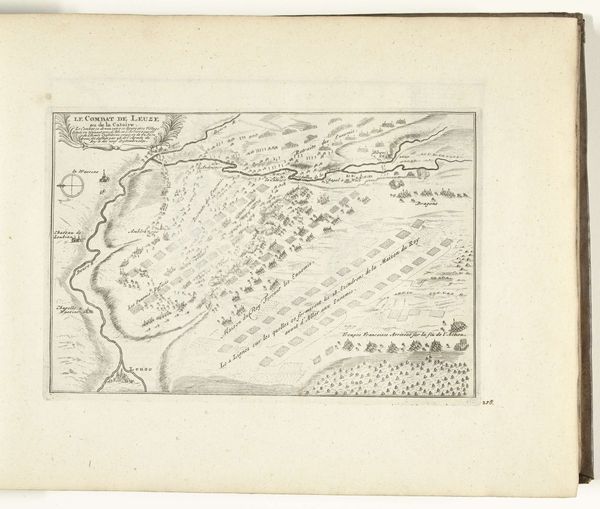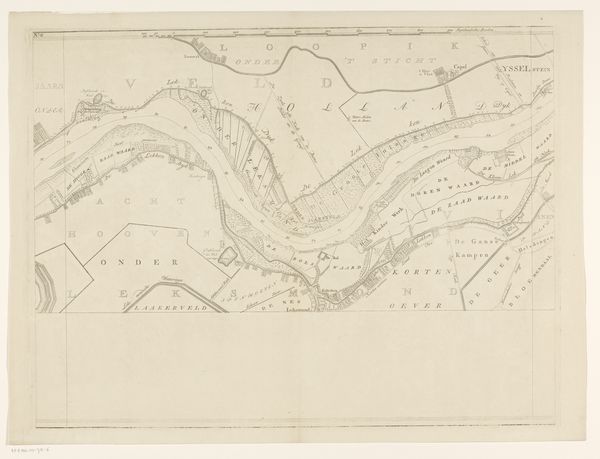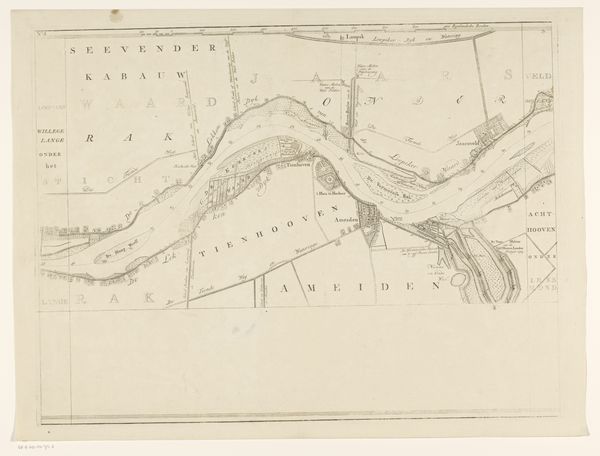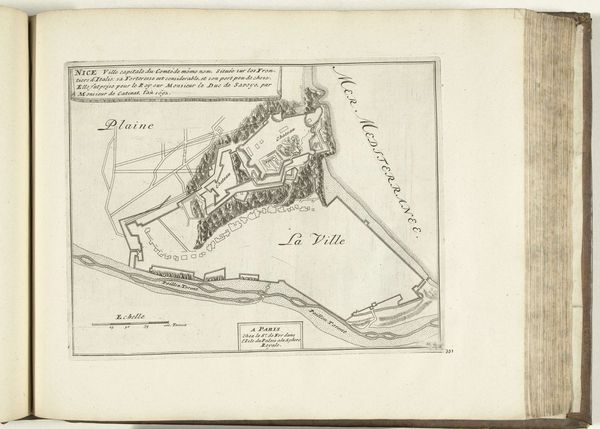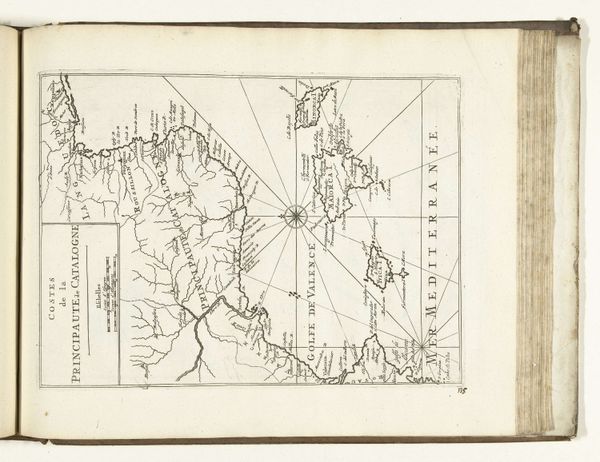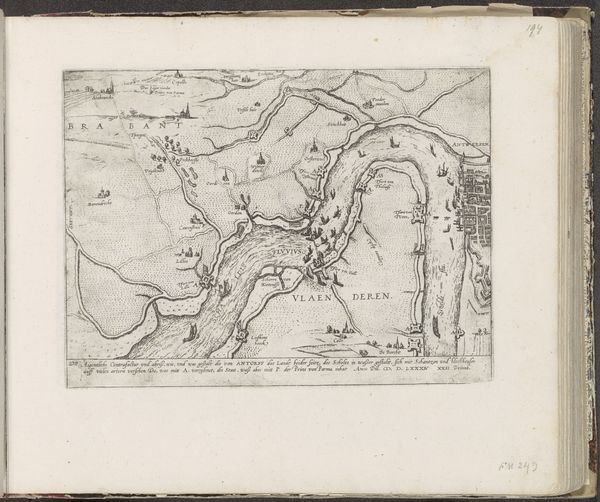
drawing, paper, watercolor, ink
#
drawing
#
narrative-art
#
baroque
#
dutch-golden-age
#
landscape
#
paper
#
watercolor
#
ink
#
history-painting
Dimensions: height 207 mm, width 317 mm
Copyright: Rijks Museum: Open Domain
Curator: This meticulously rendered drawing, dating back to 1705, is titled "Slagorde van het Franse leger achter de rivier de IJse," which translates to "Order of Battle of the French Army Behind the IJse River," attributed to Samuel Du Ry de Champdoré. Editor: It strikes me as almost unnervingly neat. The colors are muted, almost fragile, given that it represents military strategy and, inevitably, violent confrontation. The controlled lines… are these watercolor and ink, mainly? Curator: Indeed. We see a mixed application of ink and watercolor on paper. Look at how precisely the topographical layout is rendered, showing the positions of the troops in relation to the river. What’s compelling is understanding the production of such images. These aren't paintings meant for aesthetic appreciation; they served very specific functions within a military-administrative context. The choice of paper, ink, and watercolor makes for a portable document, readily duplicated and disseminated amongst strategists. Editor: I agree. Though, from an iconographic point of view, notice the symbolic weight given to the river. Rivers, throughout art history, have marked both division and passage. Is the "IJse" intended to offer strategic depth, protection? Curator: Absolutely, the river functions as a defensive barrier, strategically deployed. But more than that, this rendering and dissemination emphasizes how crucial it was to organize the theater of war itself as a resource – to catalogue it through paper. The image’s very materiality became central to the management of resources and planning that made up a war effort. Editor: That is undeniable. Look closer. The carefully placed encampments— tiny symbolic representations—are these signifiers, in their placement, attempting to visually communicate ideas of order, strength, perhaps even invincibility? This order mirrors aspirations of political dominance and cultural expression, it’s as if control is represented by way of organized spatial presentation. Curator: A very good point. It also pushes the art historical discourse in new directions, where questions about process, materials, distribution are at the forefront. It reconsiders existing ideas regarding hierarchies linked to materials and production practices, such as supposedly neutral practices such as "drawing." Editor: Precisely. In looking at this piece, its careful symbols in mind, its historical value isn’t simply descriptive; it's a glimpse into how strategy becomes visualized – how lines on paper translate into the movement, potential loss, and, ultimately, a remaking of territories. Curator: An image, and object, revealing its significance beyond solely what it depicts. Editor: Leaving us, now, with a greater understanding of visual-strategy through cultural meaning and human intention, revealed from war itself.
Comments
No comments
Be the first to comment and join the conversation on the ultimate creative platform.
